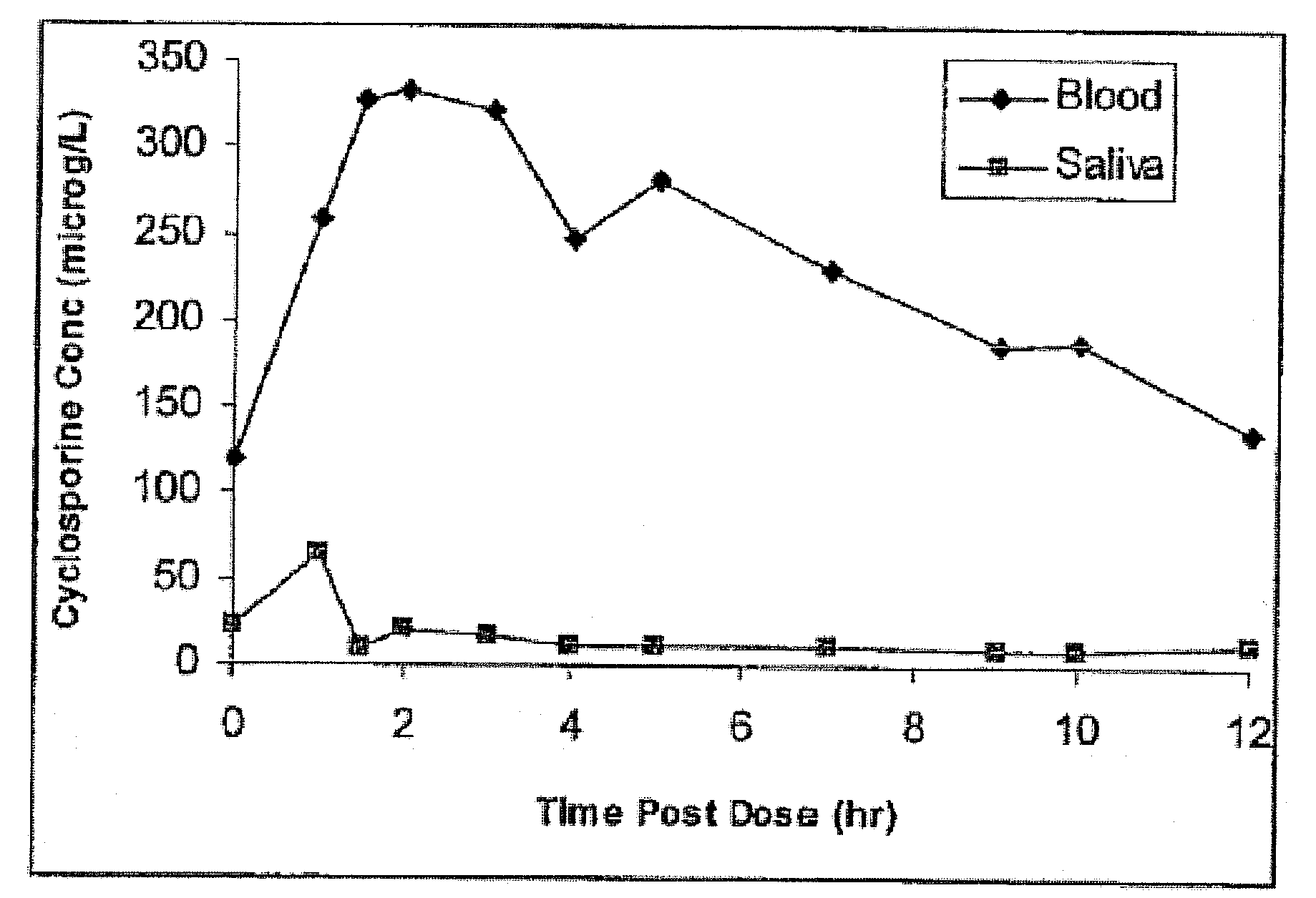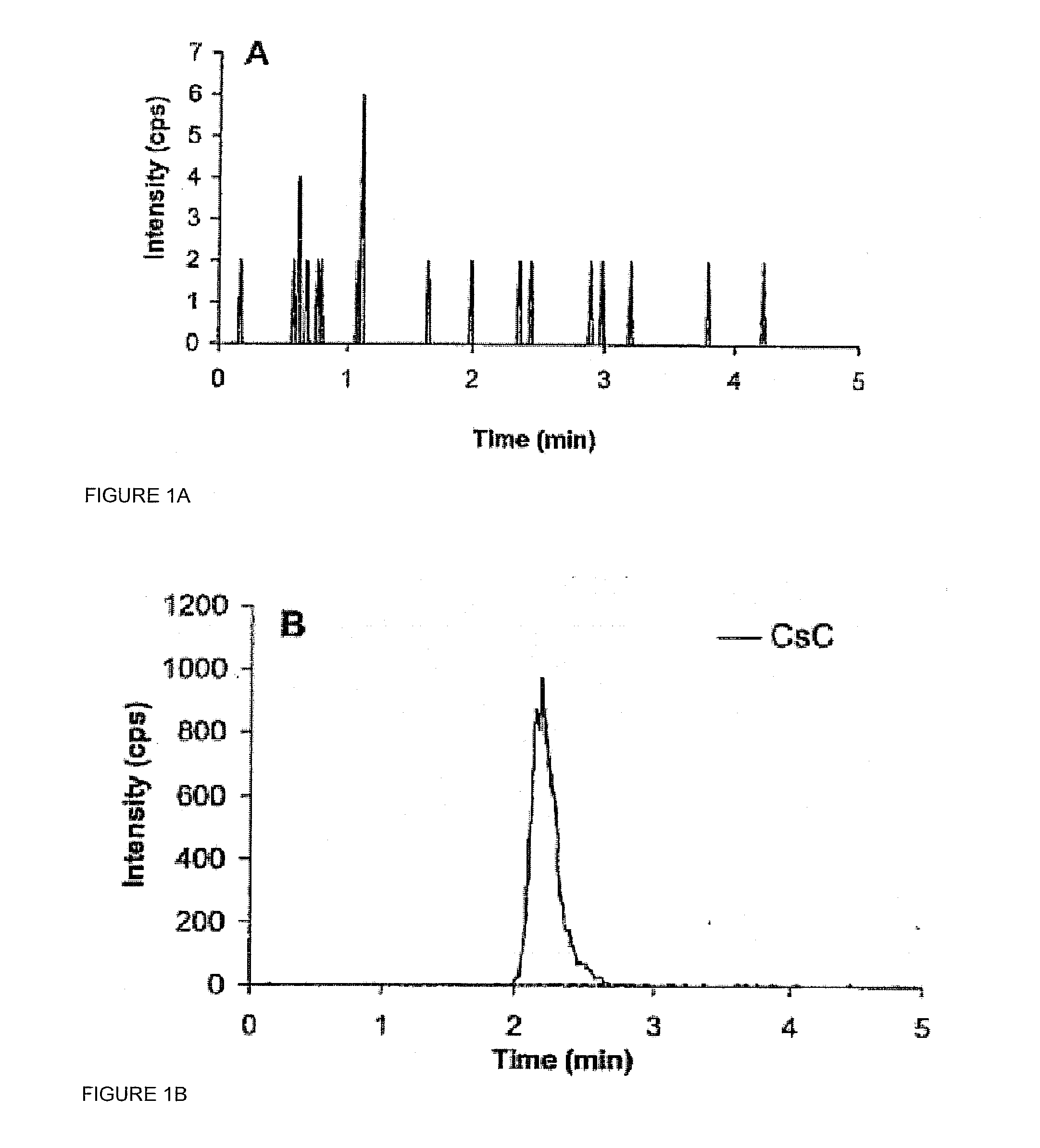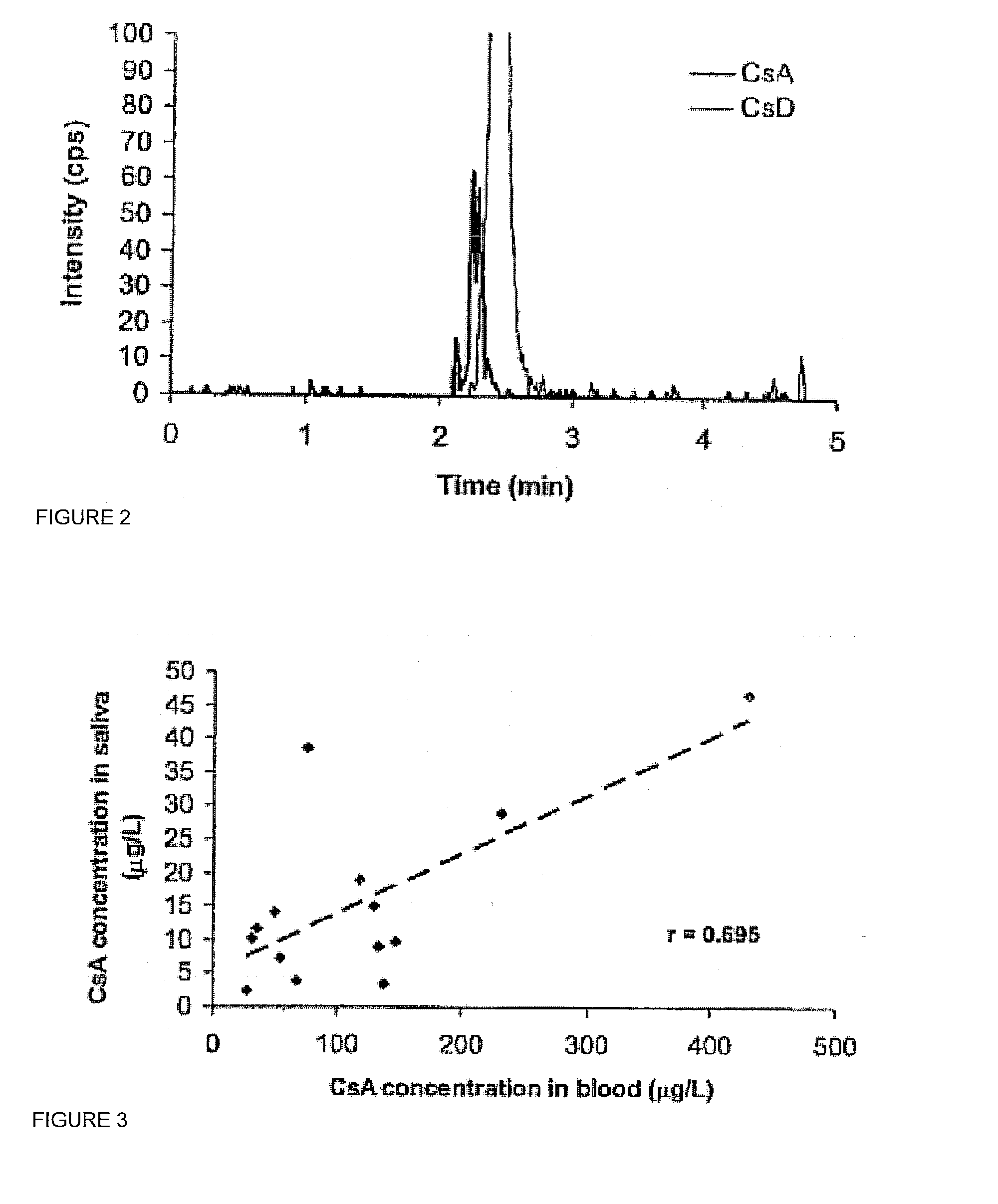Monitoring cyclosporine in saliva
a cyclosporine and saliva technology, applied in the direction of instruments, material analysis, cyclic peptide ingredients, etc., can solve the problems of insufficient inability to obtain sufficient quantity of blood from some patients, and the diffusion of drugs between blood and saliva is limited to the unbound fraction of drugs, so as to improve the recovery and consistency of cyclosporine extraction
- Summary
- Abstract
- Description
- Claims
- Application Information
AI Technical Summary
Benefits of technology
Problems solved by technology
Method used
Image
Examples
Embodiment Construction
[0019]Described herein is a method for measuring the amount of the immunosuppressive agent, cyclosporine in human saliva samples. The validation procedure of the assay to measure cyclosporine in saliva according to the guidelines set by the Food and Drug Administration of the United States is also described herein. A correlation was found of the results between saliva concentrations with blood and plasma concentrations in samples obtained from kidney transplant recipients.
[0020]Saliva measurement of CsA presented a number of challenging issues that had to be overcome for successful method development. First, the concentration of CsA in saliva would be much lower than the CsA concentration in whole blood. In a study of 36 kidney transplant recipients, the mean±SD of trough concentration of CsA in saliva was 8.3±5.2 μg / L using the RIA method described earlier. This concentration is much lower than the expected through or minimum concentrations in whole blood. Using the ammonium adduct...
PUM
| Property | Measurement | Unit |
|---|---|---|
| concentrations | aaaaa | aaaaa |
| flow rate | aaaaa | aaaaa |
| flow rate | aaaaa | aaaaa |
Abstract
Description
Claims
Application Information
 Login to View More
Login to View More - R&D
- Intellectual Property
- Life Sciences
- Materials
- Tech Scout
- Unparalleled Data Quality
- Higher Quality Content
- 60% Fewer Hallucinations
Browse by: Latest US Patents, China's latest patents, Technical Efficacy Thesaurus, Application Domain, Technology Topic, Popular Technical Reports.
© 2025 PatSnap. All rights reserved.Legal|Privacy policy|Modern Slavery Act Transparency Statement|Sitemap|About US| Contact US: help@patsnap.com



